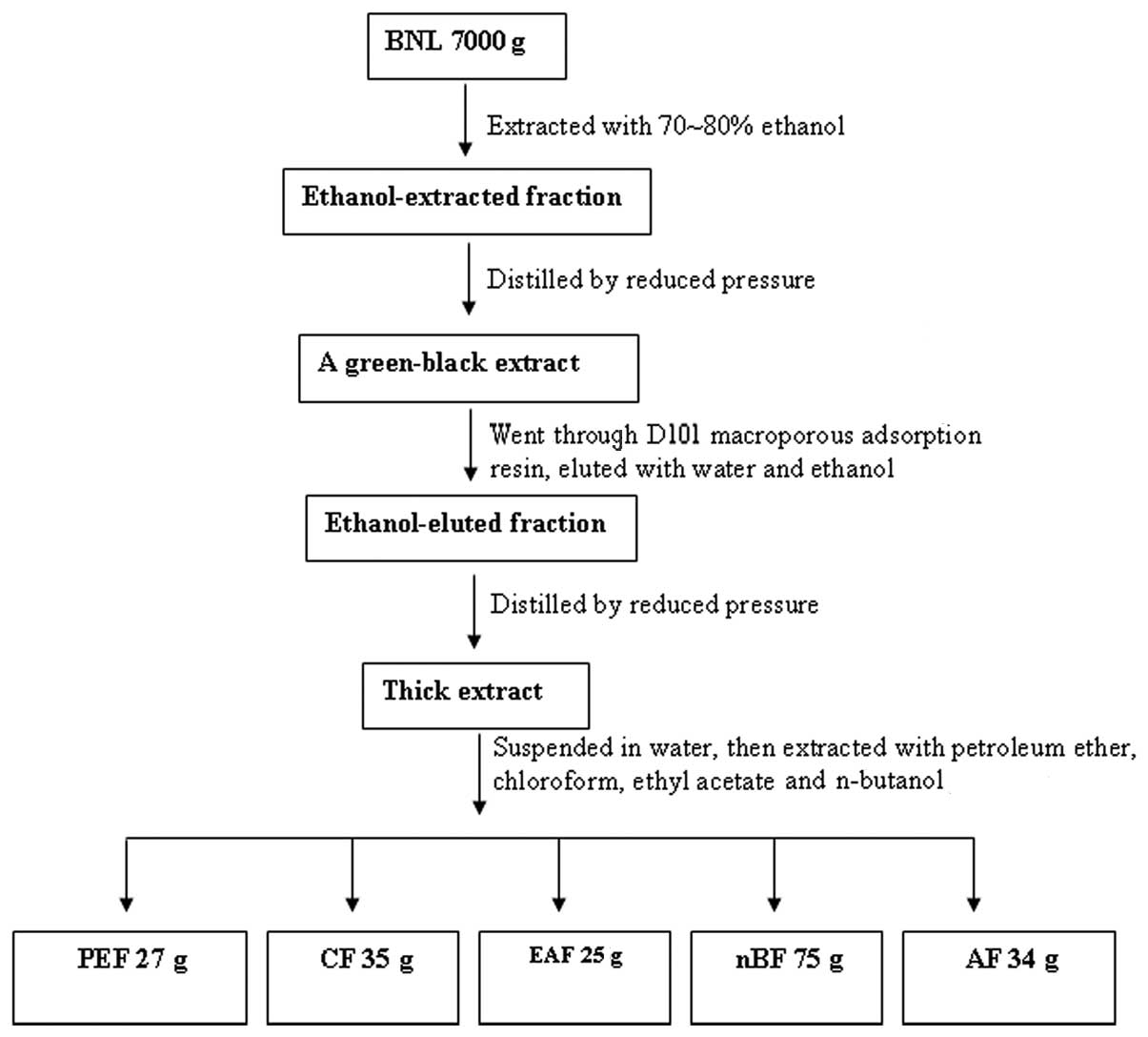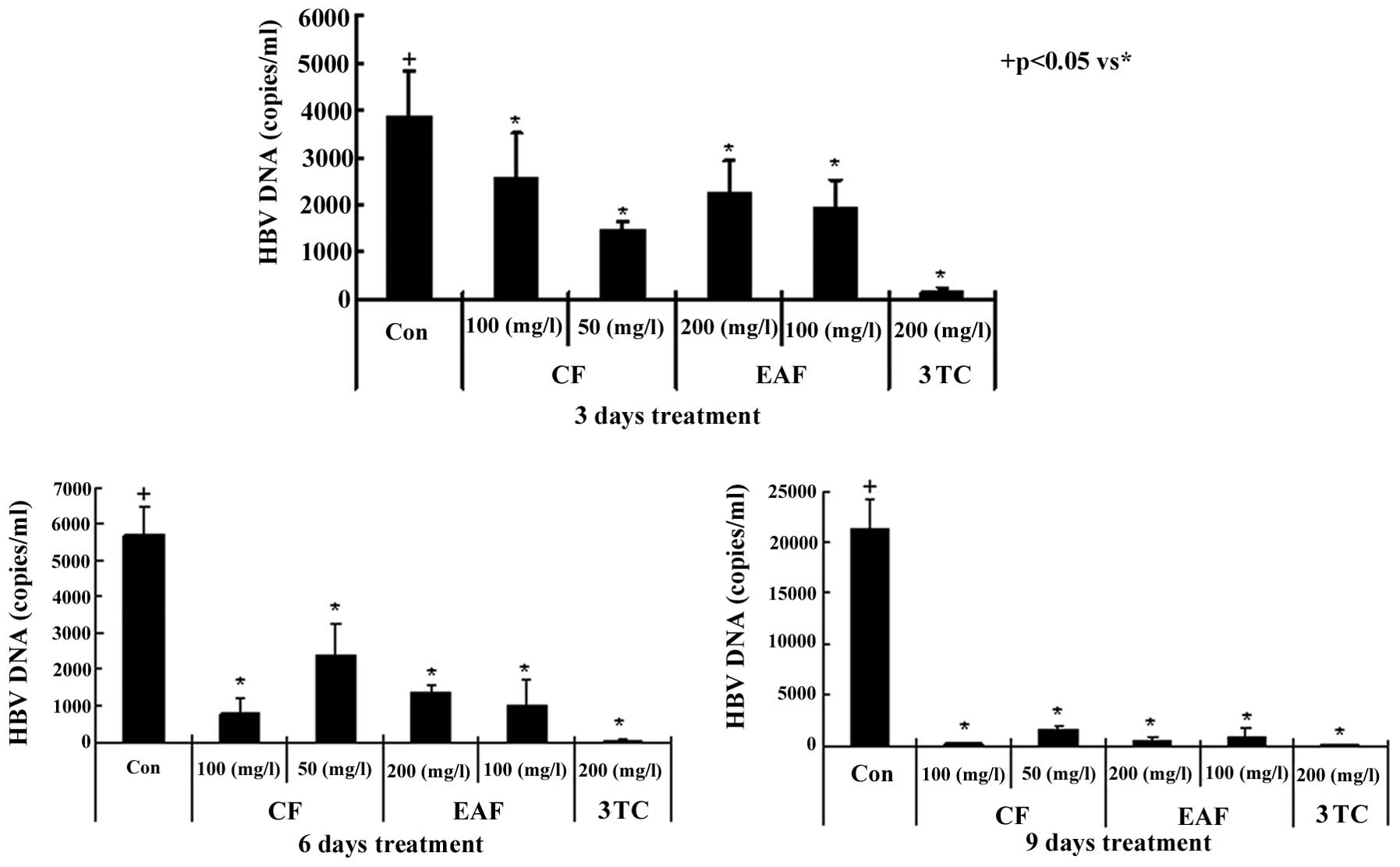Anti‑hepatitis B virus activity of Boehmeria nivea leaf extracts in human HepG2.2.15 cells
- Authors:
- Published online on: November 22, 2013 https://doi.org/10.3892/br.2013.205
- Pages: 147-151
Metrics:
Total
Views: 0 (Spandidos Publications: | PMC Statistics:
)
Total PDF Downloads: 0 (Spandidos Publications: | PMC Statistics:
)
Abstract
Boehmeria nivea (Linn.) Gaudich of the Urticaceae family is a perennial ratoon herbal plant, the root of which is used in traditional Chinese medicine and possesses a variety of pharmacological properties. the 20% ethanol Boehmeria nivea root extract was shown to exert an anti‑hepatitis B virus (HBV) effect in vitro and in vivo; however, whether the Boehmeria nivea leaf (BNL) extract possesses similar properties has not been determined. In this study, we aimed to investigate the anti‑HBV effects of the BNL extract in HepG2.2.15 cells transfected with human HBV DNA. Our results demonstrated that the secretion of HBsAg and HBeAg was reduced in HepG2.2.15 cells treated with the BNL extract, without any recorded cytotoxic effects. In addition, the chloroform fraction (CF) and ethyl acetate fraction (EAF) of BNL were shown to be more potent compared to the other fractions: CF (100 mg̸l) inhibited the secretion of HBsAg by 94.00±1.78% [inhibitory concentration 50 (IC50) = 20.92 mg̸l] and that of HBeAg by 100.19±0.35% (IC50=19.67 mg̸l) after 9 days of treatment. Similarly, EAF (200 mg̸l) inhibited the secretion of HBsAg by 89.95±2.26% (IC50=39.90 mg̸l) and that of HBeAg by 98.90±1.42% (IC50=36.45 mg̸l). Furthermore, we observed that the content of HBV DNA in the medium secreted by the HepG2.2.15 cells was significantly decreased under CF (100 mg̸l) or EAF (200 mg̸l) treatment. Thus, we concluded that the BNL extracts exhibited anti‑HBV activity, with CF and EAF being the most potent among the fractions.












